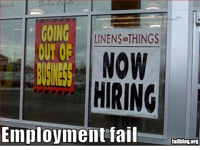 Last week the New York Times published a piece titled $200 Textbook vs. Free. You Do the Math by Ashlee Vance.
Last week the New York Times published a piece titled $200 Textbook vs. Free. You Do the Math by Ashlee Vance.
Today we take up the challenge posed in the title and demonstrate that Open Source Textbooks are twice as expensive as books in the K12 market.
Let me state right up front that I’m all for using economic and technology forces to drive costs down while improving services. I agree that Open Source instructional materials have a place and will play a role in coming years in doing exactly this. But they are not the panacea painted by their advocates in the article.
 The Education Business Blog
The Education Business Blog


 On-line bullying has been a concern as long as the web has been around. Yet only now, with the proliferation of social networks, is it really getting its due. Today’s New York Times has an
On-line bullying has been a concern as long as the web has been around. Yet only now, with the proliferation of social networks, is it really getting its due. Today’s New York Times has an  Yesterday the minority in the Senate ended the chances that the
Yesterday the minority in the Senate ended the chances that the 
 When
When  Federal
Federal  While we hash out what
While we hash out what  The tribe gathered, bad coffee was drunk, stale muffins were eaten, and we shared insights and guesses about where education technology and publishing are headed in era of tight budgets and ARRA munificence. It was a typical first week of December in New York.
The tribe gathered, bad coffee was drunk, stale muffins were eaten, and we shared insights and guesses about where education technology and publishing are headed in era of tight budgets and ARRA munificence. It was a typical first week of December in New York. Education jobs fell for the first time since 1959 while enrollments were increasing. There were only three other years in the past 50 years where education employment shrank – and all of them were during periods of declining enrollment as the baby boom petered out.
Education jobs fell for the first time since 1959 while enrollments were increasing. There were only three other years in the past 50 years where education employment shrank – and all of them were during periods of declining enrollment as the baby boom petered out. My last post on the difficulty of educational reform got me thinking about that other massive system we are trying to reform – healthcare. One way to understand the healthcare system is to compare it to education – where we have had universal single payer access for over 100 years.
My last post on the difficulty of educational reform got me thinking about that other massive system we are trying to reform – healthcare. One way to understand the healthcare system is to compare it to education – where we have had universal single payer access for over 100 years.